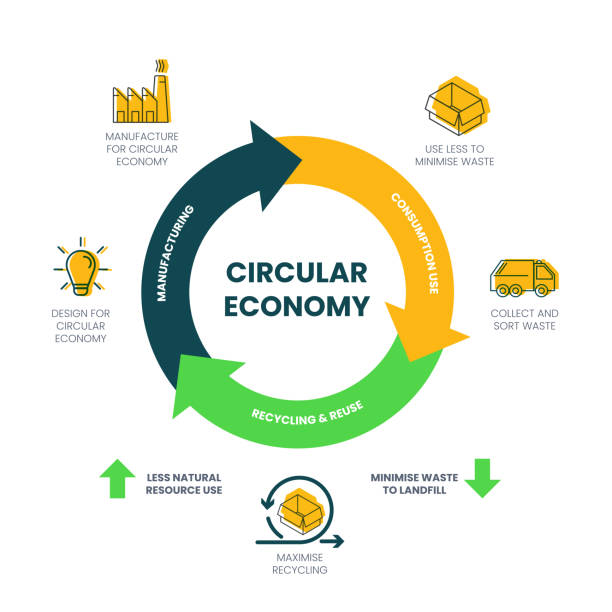A circular economy is a model of production and consumption, where items and products are reused whenever possible rather than discarded. Taking the cynical approach, circular economy is a fancy way of saying used products. The circular economy is a sustainable economic model that focuses on reusing and recycling materials to reduce the consumption of natural resources and avoid waste creation.
5R of Circular Economy
Refuse: Setting a framework and standards to prevent the procurement of non-recyclable or hazardous products or foreign products. This is the first stage of enabling a circular economy as it prevents in ending up non-biodegradable sometimes non-recyclable wastes which saves the cost of disposals in the part of the company.
Reduce: Planning the requirements in advance and procuring the goods in intervals while simultaneously evaluating the market conditions will help in reducing the unnecessary storages and being meticulous about amount required would help in reducing the wastages.
Reuse: It is important to start using the products that can be reused than use-and-throw items. In real life, the best practices are to encourage bringing bags or using paper bags for grocery shopping, use metal straws than plastic straws, Fabric shopping bags than plastic bags etc.,
Repurpose: Every item that can’t be refused, reduced, or reused, try repurposing it. Many people in the green community refer to this method as upcycling. For instance, using wasted printer paper for scrap paper, cardboard boxes for storing supplies, binder clips to hold power cords and chargers in place, and even mason jars, coffee mugs, and tin cans for holding pens and pencils.
Recycle: The final option in the chain. When you do need to use single-use items, ensuring to choose those made from materials which are recyclable and dispose of them in the correct recycling stream, so that they stay within the cycle and can be turned into something useful once again.
The circular economy in relation to ESG:
Environmental (E): The circular economy promotes practises including recycling, reusing, refurbishing, and remanufacturing to reduce resource consumption and waste output. As a result, there is less demand placed on natural resources, less pollution, and less emissions of greenhouse gases. By promoting a more environmentally friendly and sustainable method of conducting business, these initiatives support the environmental aspect of ESG.
Social (S): The circular economy affects society in several ways. Jobs in industries like repair, remanufacturing, and recycling may be produced as things become more robust and repairable and as more focus is placed on local production and consumption. The local economy and employment rates may benefit from this. A further benefit of the circular economy is that it promotes the sharing economy (such as ride-sharing and co-working spaces), which can strengthen links within communities and lessen the need for new resources in general.
Governance (G): The circular economy necessitates modifications to supply chain management, company strategies, product design, and waste management procedures. Businesses that adopt the ideas of the circular economy frequently need to review their governance frameworks, risk management techniques, and long-term planning. To comply with the governance component of ESG, effective governance ensures that the company’s commitment to circular practises is ingrained in its decision-making processes.
For example, Renault Group’s return on investment being 5.3% and having operating margin of 7.6% as of June 30,2023 has implemented various circular economy principles such as:
- Application of Eco-design to vehicles and batterie enabling frugal use of rare materials, the integration of recycled materials, drastically cutting the carbon footprint of each vehicle produced, the predisposition of vehicles for their dismantling and recycling at the end of their life.
- Projects aimed at developing technical solutions and industrial channels for collecting, reusing, renovating, and recycling parts and materials.
- Renault Espace is 90% recyclable.
- A vehicle is 85% recyclable. Yet less than 30% of recycled automotive materials are re-injected back into the production of new vehicles. To reverse this approach, The Future Is NEUTRAL, a subsidiary, formed to offer closed-loop recycling solutions, from car to car. Its aim is to help industry players move towards resources neutrality by increasing the proportion of recycled automotive materials in the production of new vehicles. The company targets 2.3 billion euros in revenue and an operating margin of more than 10% by 2030.
- When the battery is no longer usable, instead of discarding it and recycling it, a second life is given to it to store renewable energies to power buildings for example.
(This article was written by Kajalakshmi R, Audit Executive at RVKS and Associates)
